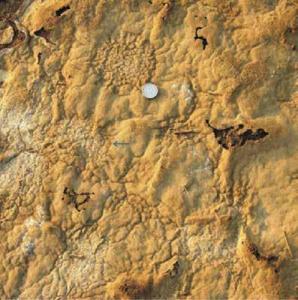
Microbes play an important role in modifying depositional dynamics of sedimentation systems. Microbes dominated the Precambrian biosphere and were limited to stressful depositional conditions in Phanerozoic. Microbially mediated sedimentation is well known in Precambrian. However, microbe- sediment interaction is less studied in Precambrian siliciclastics.Microbes play an important role in modifying depositional dynamics of sedimentation systems. Microbes dominated the Precambrian biosphere and were limited to stressful depositional conditions in Phanerozoic. Microbially mediated sedimentation is well known in Precambrian. However, microbe- sediment interaction is less studied in Precambrian siliciclastics.
A better perspective on microbial mat influence on physical, chemical and biological characteristics of sediment arises out of a thorough study of potential microbial features. A wide range of features form as microbes turn sediments to highly cohesive substance. Ammonification, sulphate reduction and denitrification of microbially related sediments influence alkalinity of seawater. Many of these peculiar structures resemble trace fossils of advanced metazoans. Microbial colonies may often appear disc-shaped on sediment surfaces, resembling jelly fish impressions.
A careful investigation reveals microbial mat origin of most reported trace fossils in Precambrian. A thorough idea of microbial features in modern environment, therefore, is necessary to understand the evolution of earth’s earliest life forms. Since microbes are earth’s earliest life forms, it is essential to study microbial related structures in Precambrian to understand life in other planets. Microbial mat related black shale is a potential source of hydrocarbon in Precambrian. Precambrian sedimentation and stratigraphy are highly influenced by microbe-sediment interaction. A variety of microbial structures are investigated from excellent outcrops in Precambrian Vindhyan, Chattisgarh and Cuddapah basins in peninsular India.
Prof. S Banerjee
